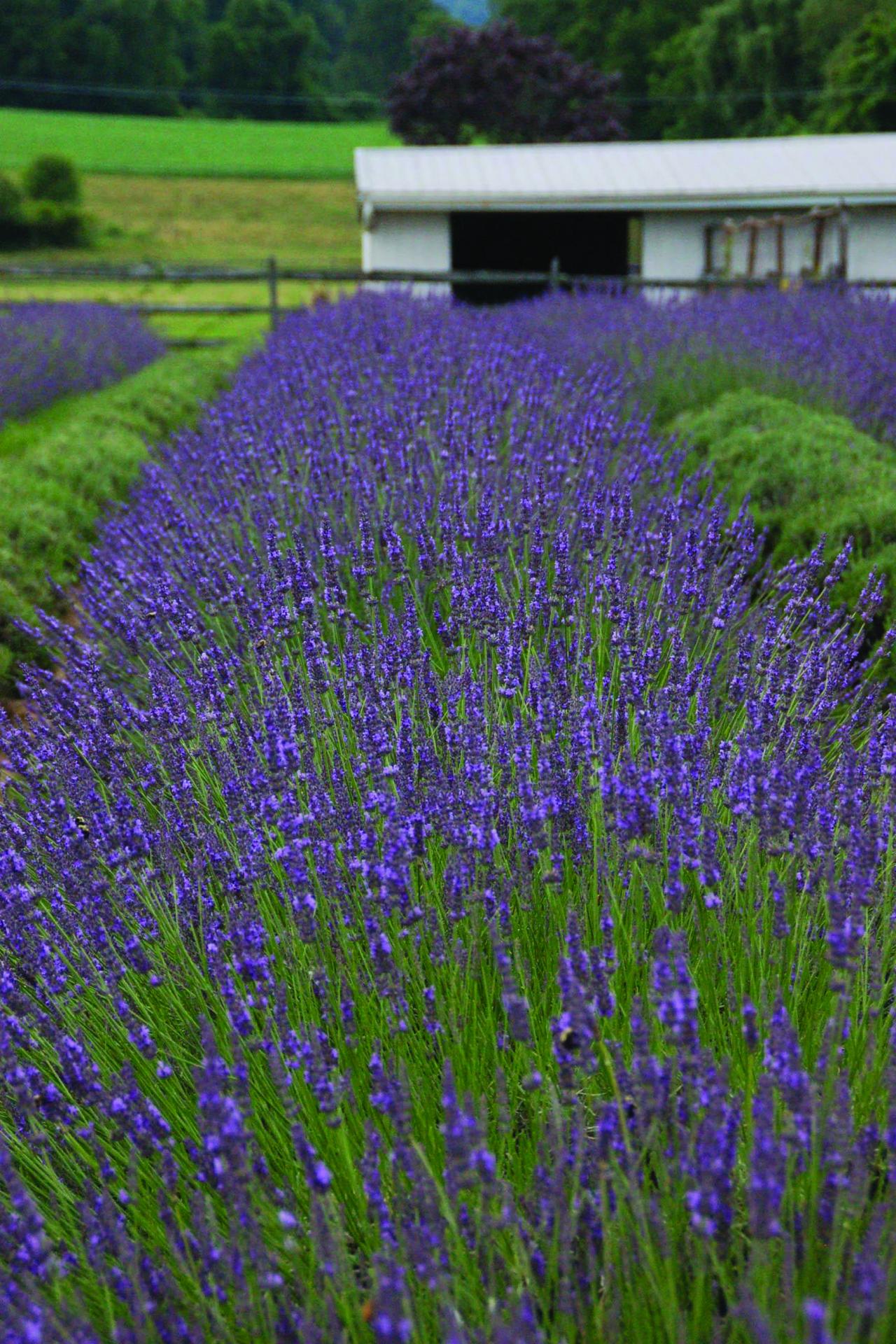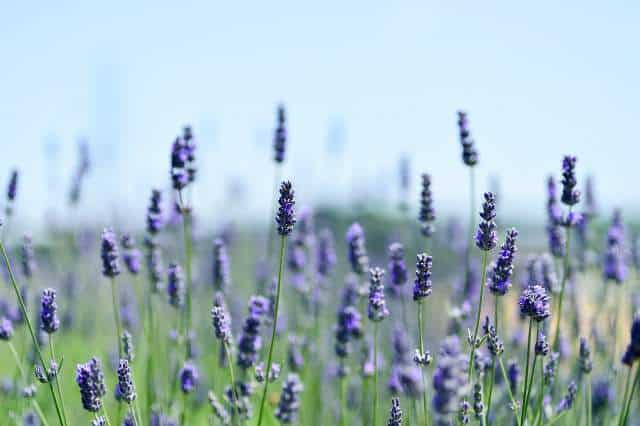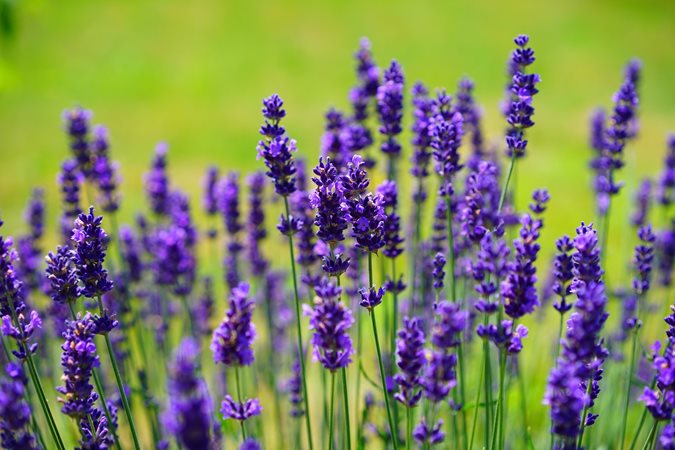The simplest lavenders to cultivate are English types like “Munstead” and “Hidcote,” which require little care and can thrive in both hot and cold areas. English lavenders are the easiest lavenders to grow.
Since these lavenders are cultivated commercially for their oil and fragrant foliage, there is also no compromise in terms of aroma.
Because: English lavenders are the easiest to grow,
- Pruning is only necessary once a year, either at the beginning of spring or in the fall.
- You never need to use fertilizer (lavenders are specially accustomed to low fertility soil).
- In terms of climate, versatile. Cold-tolerant, able to survive in dry, hot conditions, and tolerating frost and snow in the winter.
- Most mature English lavender plants only need watering during dry spells.
- Can be cultivated in raised beds, pots, or other containers and garden borders.
- Few diseases and pests impact all varieties of lavender. The major danger is root rot if overwatered or poorly draining soil. In comparison to other lavender species, English lavenders have a tendency to handle mild soil acidity better.
- English lavenders have a 15-year lifespan (longer then most lavender species)
It should be noted that all varieties of lavender need full sun and typically do not thrive in humid environments.
Table of Contents
The Easiest Lavender Varieties to Grow
- ‘Hidcote’ Lavandula angustifolia
- ‘Munstead’ Lavandula angustifolia
- Vera’s Lavandula angustifolia
These lavender cultivars are the most readily available and highly prized by commercial growers and gardeners for their smell and ease of cultivation if the proper conditions are met.
This is usually true for the majority of English lavender varieties, which are all significantly more cold hardy and adaptable than the French, Spanish, and Portuguese lavender varieties and tend to require a little more upkeep, especially in the winter when they might need to be brought indoors for protection from the cold.
Other excellent substitutions for simple-to-grow lavender include:
- ‘Grosso’ Lavandula x intermedia
- ‘Phenomenal’ Lavandula x intermedia
For “Grosso” and “Phenomenal,” respectively, both of these lavenders are hybrids of English lavender and Portuguese lavender.
In terms of the longer flowering seasons of the French and Portuguese lavenders and the cold tolerance of the English lavenders (USDA zones 5-9), these lavenders have been bred to have the best of both worlds.
Read my articles on Lavender ‘Hidcote’ and Lavender ‘Munstead’ for the complete care instructions.
Why English lavenders are The Easiest to Grow
The ‘Hidcote’ and ‘Munstead’ varieties of English lavender (lavandula angustifolia) only need to be pruned once a year, and it only takes a few minutes.
A mound-shaped plant is the best shape to help it resist weather damage, thus pruning just entails cutting off the top third of the lavender’s flexible growth while avoiding the woody base of the plant.
Pruning prolongs the life of lavender plants and promotes flower-supporting new growth (lavender only blooms on new seasons growth).
Take a look at this YouTube video for a brief visual tutorial to pruning:
No Need for Fertilizer
All species of lavender are evolved to the nutrient-poor, sandy soil of the Mediterranean, hence they all prefer low fertility soil. Adding fertilizer will promote excessive foliage growth at the expense of blossoms, resulting in lanky growth and less fragrant foliage.
Instead, add about a third of sand or grit and a third of compost to the soil. This will aid in simulating the low-to-moderate fertility conditions found in the Mediterranean coast, where lavender grows well.
Sand or grit is also essential since it improves soil drainage, which is ideal for lavender plants because they need dry soil that doesn’t retain moisture to prevent issues like root rot.
For information on how to mix the ideal soil mixture for lavenders, read my post.
Climate: Cold Hardy and Heat Resistant
The only lavender species that can survive in cold climates with more rainfall is English lavender (as long as the soil has been amended with sand or grit to increase the rate of drainage).
The more delicate French and Spanish lavenders are less tolerant of freezing temperatures in the winter than the robust English lavenders. It is frequently necessary to grow French and Spanish lavender in pots so that they can be taken indoors before the first cold without injuring the plant.
English lavenders, on the other hand, are cold-tolerant and can withstand freezing temperatures, snow, and ice throughout the Winter as long as they are in full sun and in soil with good drainage. English lavenders may survive in USDA zones 5 to 11, with the hardiest cultivars being “Munstead” and “Hidcote.”
Water Only During Droughts
In temperate climes, lavenders frequently get all the moisture they need from the environment once they have established themselves, thus they rarely need additional watering.
All varieties of lavender are native to the dry, scorching regions of Southern Europe where they rarely get rain but still survive and produce the biggest blossoms and the greatest perfume.
Lavenders normally only need watering in the summer when there has been no significant rainfall for longer than two weeks due to a drought.
Lavenders should, however, receive frequent watering after planting while their root system adapts to the new environment.
Read my article on how often to water lavender to find out how to water lavender under various circumstances.
Thrives in Pots Containers, Raised Beds and Garden Boarders
This is true for all varieties of lavender as pots and raised beds frequently offer good drainage and have the advantage of allowing for far simpler soil profile control than garden borders.
Therefore, if your garden soil is not ideal for producing lavender and would require major amendments that are typically labor-intensive, pots, containers, and raised beds can offer a simple alternative to planting lavender in garden soil.
For instance, enriching the soil is possible but necessitates extra upkeep if your soil is extremely slow-draining or acidic (lavenders require soil to be between pH 6.5 and 8, which spans from mild acidity to alkaline conditions).
Compared to garden borders, raised beds and pots can also improve airflow among the lavender plants’ foliage, lowering the danger of fungus disease.
The more delicate French and Spanish lavender must be moved indoors to shield them from the cold, which is difficult in terms of finding enough room. English lavenders can thrive outdoors all year round in pots and raised beds.
Read my advice on picking the ideal container for growing lavender.
Fewer Problems
English lavenders are extremely resistant to most pests and illnesses because they are both:
- resistant to deer
- resistant to rabbits
Fortunately, diseases do not frequently affect lavender plants. The most frequent issue is root rot caused by the fungus phytophthora, which is typically avoidable by following the correct watering instructions and making sure your lavender is planted in a soil mixture that drains effectively.
The greatest aroma and the most blooms are produced by lavenders when they are grown in full sun. Partial shade causes lavender plants to either grow lanky or have short lifespans.
Since lavenders are evolved to windy coastal conditions in dry climes, they do not all survive humid environments particularly well. When compared to lavender planted in garden borders, raised beds or containers can help boost ventilation.
Lives longer then other Lavenders Species
An English lavender plant typically lives and blooms for 15 years, while there are rumors that it can survive much longer. This depends on giving the lavender the ideal conditions for growth and, most importantly, on pruning the lavender each year.
You can neglect lavenders and they will still produce flowers and grow as long as they are in full sun, have sandy soil that drains well, and are not overwatered.
This stands in stark contrast to the majority of garden plants, like roses, which can often require a lot of time, attention, and money to look their best.
Even with proper care, French and Spanish lavenders may not live as long as English types, which is why English lavenders are frequently preferred for planting as hedges.
FAQ
How fast does lavender take to grow?
It could take one to three months for lavender to reach transplanting size due to its slow growth. Fungus is the main danger to lavender seeds and seedlings. While maintaining sufficient air circulation, keep the soil mixture moist to help prevent disease outbreaks.
Why is my lavender plant not blooming?
The location of your lavender in the garden is incorrect. Lavender is native to the warm Mediterranean and requires at least six hours of sunlight each day to blossom. Your lavender won’t bloom if you grow it under a tree. A place with a lot of wind is also not ideal because lavender prefers tranquil, hot summers.
Does lavender flower the first year?
The first year after the lavenders are planted, they will develop slowly, but the majority of them will bloom. By the next year, you will have a wonderful supply of lavender to plant into a hedge or use as a vibrant border for your perennial bed.
How long does it take for lavender to fully grow?
The maturation period for new plants grown from seeds ranges from 90 to 200 days. When English lavender achieves a height and spread of between 1 and 2 feet, it is said to be fully mature. Lavender (Lavandula angustifolia) is a perennial herb in the mint family that is semi-evergreen.



